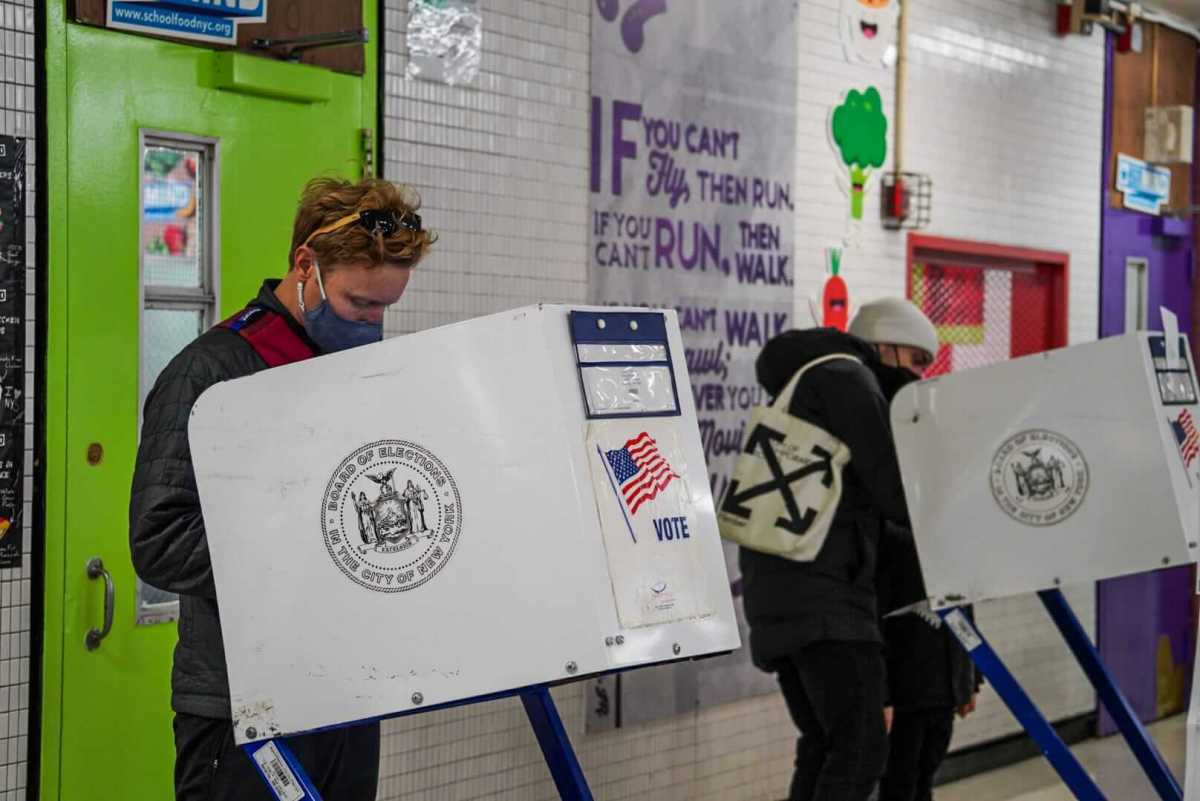By Morgan C. Mullings
Ballot proposals can’t fight for themselves like candidates for office do, but a few of them lost the battle on election night. According to the Associated Press, three ballot proposals aimed at reforming the election process in New York state failed on Nov. 2, after hard fought campaigns against them by state Conservatives.
Proposal #1: Count incarcerated residents at their last home, count non-citizens, and freeze the number of state senators at 63. The measure passed within the city with 61 percent of voters approving it and 39 percent rejecting it, but when tabulated with statewide votes, 56% or 1,517,296 votes were against it as opposed to 44%, 1,201,555 votes for it.
Proposal #3: Let citizens register to vote much closer to election day. Statewide voters rejected proposal 3 with 58% or 1,606,939 voting against it and 42% or 1,179,169 voting for it. Citywide, however, 60% or 493,901 voted for the measure while 40% or 324,744 voted against it.
Proposal #4: Let anyone request an absentee ballot, for any reason. Proposal 4 was rejected statewide with 56% or 1,567,670 votes against it and 44% or 1,208,149 for it. City voters, however, approved the measure with nearly 59% or 479,254 voting for it and 41% or 335,221 voting against it.
The nonpartisan Citizens Union advised a no vote on proposal one early on. “This amendment contains a number of provisions, but Citizens Union is most concerned that it would remove the protections that ensure no one political party could dominate the redistricting process,” By lowering the needed majority and changing voting procedures to approve new maps, the amendment effectively cuts off the minority party from having any influence on the redistricting process, said Betsy Gotbaum, the group’s executive director.
The Kings County Conservative party also argued against proposal one, for similar reasons, but differed on #3 and #4. They followed the nationwide call in the aftermath of the 2020 election: election reform gives way to voter fraud. Though this has not been proven, Republican and Conservative party members across the state such as Kings County Conservative Party were determined to keep voting rights where they are.
The state’s Conservative party spent $3 million on television and radio ads to support their claims before the elections, according to the New York Times. The state Democratic Party did not spend ad money to promote the reforms they supported and had trouble rallying the base around the pro-democracy initiatives.
PoliticsNY reported on Oct. 1 that watchdogs were worried that there wasn’t proper education on the ballot proposals from parties who wanted a yes vote and the state itself. Law Professor Jeffrey Wice told PoliticsNY at the time that the state is not required to promote ballot proposals, which could result in a situation similar to the clunky introduction of ranked-choice voting in NYC.
“Also, groups like the New York City Campaign Finance Board and the League of Women Voters publish materials on their own that explain the amendment, but oftentimes we find that these proposals are not explained to the public in a way that can be better done,” Wice said.
If only one group is providing educational materials, whether in the form of advertising against the proposals or not, the public only has access to biased information. It’s also important to note that turnout was already expected to be low, so if Democrats wanted a rush of support for election reform, they would have to work harder to ensure voter turnout.
So, who is responsible? Alexander Wang, Executive Director of the New York State Democratic Committee does not agree with placing blame on the committee, but he does not excuse outcome either. “Our resources are not infinite, and I think that’s where we get caught up in the weeds here,” Wang told PoliticsNY.
He noted that they have a robust mailing program for the over 150 candidates they were representing this year. They provided messaging related to ballot proposals as well, and funding to their local partners to help get the word out.
“The press has reported that we had an ask to do more, and that soft ask to do more came two days before the start of early voting,” Wang continued.
He said that in the future they will be coming up with ideas on how to do better, but for now, the lack of dedicated representation for these three ballot proposals may have spelled their failure.
This story first appeared on PoliticsNY.com.
Sign up for Long Island Press’ email newsletters here. Sign up for home delivery of Long Island Press here. Sign up for discounts by becoming a Long Island Press community partner here.































